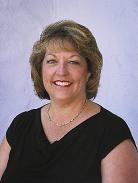 A large part of an ambulatory surgery center's reputation hinges on efficiency. "Smooth patient flow is key to surgeon and patient satisfaction, both which are key performance indicators for an ASC," says Regina Boore, the CEO of Progressive Surgical Solutions and administrator of Newport Bay Surgery Center in Newport Beach, Calif. Ms. Boore describes four tips for surgery center administrators to smooth out any wrinkles in patient flow at their facilities.
A large part of an ambulatory surgery center's reputation hinges on efficiency. "Smooth patient flow is key to surgeon and patient satisfaction, both which are key performance indicators for an ASC," says Regina Boore, the CEO of Progressive Surgical Solutions and administrator of Newport Bay Surgery Center in Newport Beach, Calif. Ms. Boore describes four tips for surgery center administrators to smooth out any wrinkles in patient flow at their facilities.
Sign up for our FREE E-Weekly for more coverage like this sent to your inbox!
1. Prepare paperwork and conduct patient education in advance. How quickly patients move through a surgery center may be heavily dependent on what happens after their arrival, but there are several things you can do to get off to a good start. Any paperwork or patient education that can be done prior to surgery should be completed in advance.
"Coordinate with the surgeon's surgery schedulers to make sure patients get this material in their pre-op packets. Having this completed in advance of arrival helps ensure a smooth intake process," says Ms. Boore. Preoperative packets should also include a map and directions to the facility. Any confusion or questions on the patients' and the facility's part should be addressed before intake.
2. Train everyone to lend a hand in the process. An ASC's administrator and staff should strive to ensure that each stage of patient flow is seamless. In order to accomplish perfect, or as near as possible to perfect, patient flow each member of the staff must play a role.
"When patients arrive in the facility a receptionist should be available to receive them. When they arrive in pre-op, a RN should be available to greet them and begin the pre-op assessment. Once that process is complete, the anesthesia provider and circulating RN should be available to interview the patient and the surgeon should be available to mark the site," says Ms. Boore. Staff members need to be available to help the patient through the entire process, as well as lending a hand in making sure the center itself runs smoothly.
Anyone that has a spare moment or free pair of hands should be trained in the turnover process. As patients move through the center at an efficient, safe pace, the staff should be right behind preparing for the next procedure. There should also be staff members prepared to handle the discharge process and any questions patients may have as they prepare to leave the ASC.
3. Promote physician and staff communication. No surgery center can run smoothly without a strong, open thread of communication between the physicians and staff. "The ideal scenario is to start the day with a team huddle, where the surgeon can share specific patient concerns and needs. This eliminates the unknown and allows everyone to prepare for the unexpected," says Ms. Boore.
Communication must begin with the ASC and the surgeons' offices. This point of contact can go a long way to address any issues that could negatively impact patient flow, says Ms. Boore. "Whether it is a special medication, supply, equipment need or clinical condition that requires special care, advance communication ensures appropriate preparation and avoidance of delays and upsets."
4. Be ready to adjust for the unexpected. The unexpected is a variable that can derail even the most practiced and flawless patient flow process. The timing of unexpected events can never be predicted with certainty, but the surgery center that anticipates the unforeseen as inevitable will be able to handle these situations with minimal disruption.
Staff members well-versed in their positions and how a surgery center works are the first and biggest step in being prepared for the unpredictable, but the absence of a single staff member can cause a hitch in patient flow. Employee sick days can be one of the biggest stumbling blocks for patient flow and well-run ambulatory surgery centers often do not have excess staff.
Ms. Boore suggests having "time and attendance policies that encourage early notification and maintaining a list of per diem staff willing to come in for a few hours to help you 'get over the hump.'" Many ASCs offer flexible scheduling and employ a number of part-time staff members, in exchange for flexibility many employees will be willing to pitch in during a staffing emergency. For example, there a few RNs who work night shifts at a local hospital are willing to fill in when staff members are unable to come in.
More Articles on ASC Efficiency:
6 Surgery Center Administrators on Best Facility Benchmarks
6 Steps to Hire a Staff That Makes Your Surgery Center Shine
5 Options for ASC Administrators to Communicate Best With Surgeons

